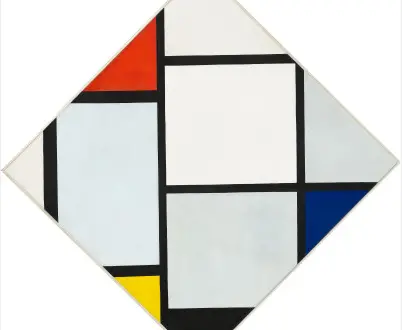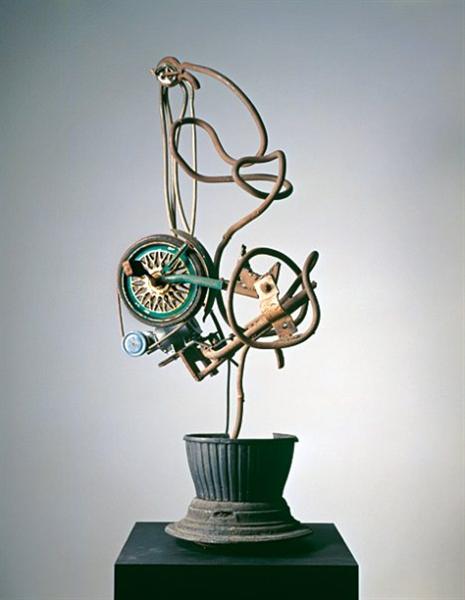Title of Artwork: “Tableau No. IV – Lozenge Composition”

Artwork by Piet Mondrian
Year Created 1925
Summary of Tableau No. IV – Lozenge Composition
The abstract or “neo-plastic” paintings of Piet Mondrian were meant to express his belief that universal harmony exists in nature. As with the dynamic equilibrium at play in the natural world, his compositions’ horizontal and vertical elements were meticulously calibrated to produce a balanced asymmetry. Black lines intersecting at right angles defined rectangles painted in white or grey and the three primary colours in 1921 by Mondrian.
All About Tableau No. IV – Lozenge Composition
This square canvas was turned 45 degrees by the artist in 1918 to rest “on point,” but the linear elements of the composition were not rotated.
To create this monumental painting, the first of his neo-plastic diamond or lozenge compositions, about three years later he combined that format with his mature colour scheme.
When the black lines became thicker in 1925, this painting resembles several other works from the 1920s, in which colour is limited to the edges.
Diamond compositions, according to Mondrian, were about cutting, and this image certainly conveys an emphatic sense of cropping. Irregularities in form suggest an ongoing pictorial narrative that extends beyond the canvas’ physical boundaries.
Information Citations
En.wikipedia.org, https://en.wikipedia.org/.























